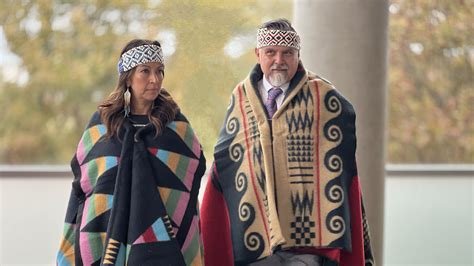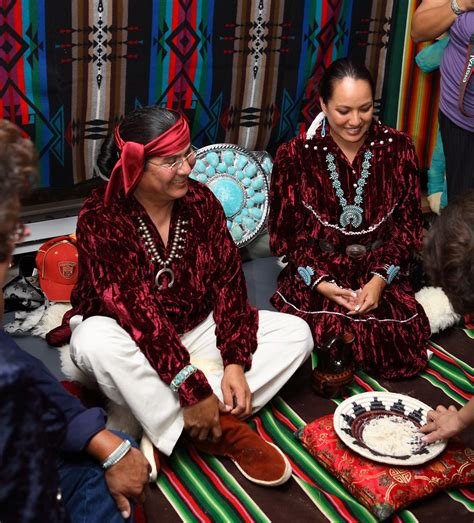Discover the beauty of Native American wedding traditions and how to incorporate them into your celebration. From sacred eagle feathers and the vase ritual to the blanket ceremony and the significance of turquoise jewelry, explore meaningful customs that honor your heritage and enrich your special day.
For those with Native American heritage or connections to Indigenous cultures, integrating these traditional practices can offer a beautiful nod to your ancestry.
Sacred Eagle Feathers: Eagle Feathers in Native American Weddings

In the traditional Native American Wedding Algonquin marriage ceremonies of the Ojibwa (Chippewa) tribe, the bride and groom each hold an eagle feather in their left hand as they exchange their vows. Eagle feathers are revered for their spiritual significance, symbolizing a deep connection with the Great Spirit. This ritual adds a sacred touch to the union, emphasizing spiritual unity and respect.
The Vase Ritual: Cherokee and Pueblo Vase Ceremony
The vase ritual is a cherished tradition among the Cherokee and Pueblo tribes. Pueblo wedding vases, featuring two spouts joined by a handle, symbolize the couple’s individual lives merging into one. Traditionally in Native American Wedding, the groom’s family crafts the vase before the wedding and presents it to the bride’s family along with marital advice. On the wedding day, the vase filled with holy water is shared by the couple, binding them in marriage. In Cherokee traditions, successful simultaneous sipping from the vase is believed to foster mutual understanding throughout the marriage.
The Blanket Ceremony: Symbolism of the Blanket Ceremony
In Cherokee weddings, the blanket ceremony involves the mothers of the couple draping blue blankets over their children. These blankets represent the challenges faced before marriage. Later, a white blanket is placed over the couple, symbolizing a new beginning free from past sorrows. Similarly, in some Native American traditions, couples may stand on a buffalo robe wrapped in a star quilt for blessings.

Sacred Fire and Smudging: The Role of Fire and Smudging in Ceremonies
Fire holds sacred significance in many Native American cultures, featuring prominently in wedding ceremonies. Some tribes use sage or other ritualistic herbs in smudging ceremonies to cleanse the couple and their officiants, while the smoke carries their prayers to the Creator. In Cherokee weddings, three fires made from seven types of trees are used: one representing the Creator and the couple’s union, and the other two signifying their individual lives prior to marriage.
The Groom’s Processional: Unique Aspects of the Groom’s Processional
In Iroquois weddings, it’s customary for the groom to process towards the bride, in contrast to the Western tradition where the bride makes her entrance. This practice underscores the matriarchal values of the tribe, symbolizing the groom’s entry into the bride’s clan and emphasizing the unity of their new life together.
Turquoise Jewelry: Traditional Turquoise Jewelry
Among the Navajo people, it is traditional for couples to wear turquoise jewelry and special blankets on their wedding day. These pieces, often heirlooms passed down through generations, carry deep cultural significance and are integral to the wedding attire, symbolizing enduring heritage and unity.
Food as a Symbol of Provision: The Role of Food in Native American Wedding Ceremonies
Food plays a crucial role in many Native American wedding ceremonies, symbolizing provision and partnership. For instance, Navajo weddings feature cornmeal mush, while Cherokee ceremonies include corn and venison. The basket ceremony, where the bride and groom exchange baskets of corn and venison, symbolizes their commitment to each other and their shared future.
Celebration of Nature: Incorporating Nature into Wedding Ceremonies
Many Native American weddings are held outdoors, reflecting a deep connection with nature. Natural elements such as wood and stones are often incorporated into the ceremony, emphasizing the couple’s bond with the land and the environment.
Ceremony in the Round: The Tradition of the Round Ceremony
Navajo weddings are traditionally held in a Hogan, with ceremonies conducted in a circular formation. This setup, with cornmeal and corn pollen at the center, represents various stages of life and cardinal directions. The circular arrangement, with participants seated clockwise, symbolizes harmony and continuity.
Focus on Privacy: The Emphasis on Privacy in Navajo Weddings
Navajo weddings are characterized by their privacy and sacredness, with photos typically not permitted. This practice highlights the intimate and spiritual nature of the ceremony, emphasizing the sacredness of the union.

Traditional Attire and Tribal Regalia: Significance of Traditional Native American Wedding Attire
Each Native American tribe has its unique wedding attire. For example, Yupik Eskimo brides wear special headdresses, while Hopi grooms don a combination of white robes and deerskin leggings. These traditional outfits reflect the cultural identity and significance of the wedding.
Horse Wedding Gift: The Tradition of the Horse as a Wedding Gift
Historically of Native American Wedding, a horse was a significant wedding gift in many Native American cultures, symbolizing honor and gratitude. While this practice has evolved, it remains a meaningful gesture in some modern ceremonies, reflecting the enduring cultural values of respect and appreciation.
Incorporating these traditional customs into your wedding not only honors your heritage but also adds depth and significance to your celebration. Whether you choose to integrate all or just a few of these practices, your wedding can become a meaningful reflection of your cultural roots and personal journey.